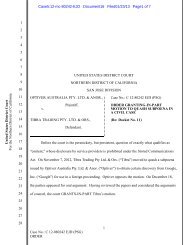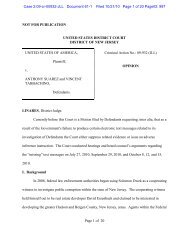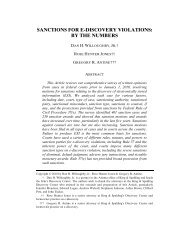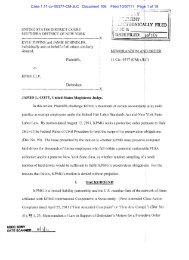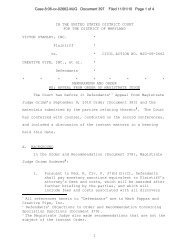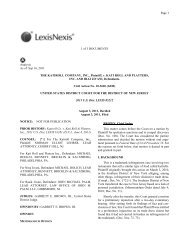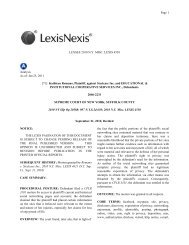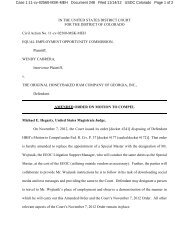Rimkus Consulting Group Inc. v. Cammarata - Ballard Spahr LLP
Rimkus Consulting Group Inc. v. Cammarata - Ballard Spahr LLP
Rimkus Consulting Group Inc. v. Cammarata - Ballard Spahr LLP
Create successful ePaper yourself
Turn your PDF publications into a flip-book with our unique Google optimized e-Paper software.
Case 4:07-cv-00405 Document 450 Filed in TXSD on 02/19/10 Page 94 of 139<br />
judgment.<br />
LA. REV. STAT. § 13:4231. Louisiana courts have observed that this statute “embraces the<br />
broad usage of the phrase res judicata to include both claim preclusion (res judicata) and<br />
issue preclusion (collateral estoppel).” Am. Med. Enters., <strong>Inc</strong>. v. Audubon Ins. Co., 2005-<br />
2006, p. 6 (La. App. 1 Cir. 6/8/07); 964 So. 2d 1022, 1028.<br />
Under claim preclusion, the res judicata effect of a final<br />
judgment on the merits precludes the parties from relitigating<br />
matters that were or could have been raised in that action.<br />
Under issue preclusion or collateral estoppel, however, once a<br />
court decides an issue of fact or law necessary to its judgment,<br />
that decision precludes relitigation of the same issue in a<br />
different cause of action between the same parties. Thus, res<br />
judicata used in the broad sense has two different aspects:<br />
(1) foreclosure of relitigating matters that have never been<br />
litigated, but should have been advanced in the earlier suit; and<br />
(2) foreclosure of relitigating matters that have been previously<br />
litigated and decided.<br />
Id. (citing Five N Company, L.L.C. v. Stewart, 02-0181, p.15 (La. App. 1 Cir. 7/2/03); 850<br />
So. 2d 51, 61).<br />
The claim preclusion aspect of res judicata applies under Louisiana law “when all of<br />
the following are satisfied: (1) the judgment is valid; (2) the judgment is final; (3) the parties<br />
in the two matters are the same; (4) the cause or causes of action asserted in the second suit<br />
existed at the time of the final judgment in the first litigation; and (5) the cause or causes of<br />
action asserted in the second suit arose out of the transaction or occurrence that was the<br />
subject matter of the first litigation.” Smith v. State, 04-1317, p. 22 (La. 3/11/05); 899 So.<br />
2d 516, 529–30.<br />
1. Finality<br />
94



